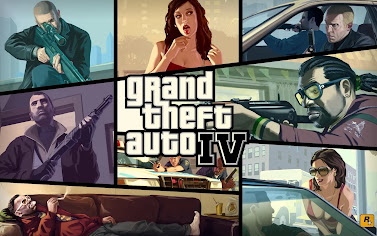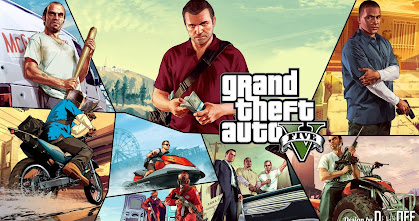Grand Theft Auto IV (GTA IV), released in 2008, was a major milestone in the Grand Theft Auto franchise and gaming history in general. Developed by Rockstar North and published by Rockstar Games, it was the first main entry in the series to be released for the PlayStation 3, Xbox 360, and later, PC. The game broke new ground in terms of gameplay, narrative, and open-world design.
Here’s the history of GTA IV, from its development to its massive impact:
1. Development and Early Concept (2004-2007)
-
Post-GTA: San Andreas Era: After the success of GTA: San Andreas (2004), Rockstar Games set out to create a new entry in the series that would push the boundaries of what was possible in video game design. They knew that GTA IV had to raise the bar both in terms of technology and narrative.
-
New Engine (RAGE): Rockstar used a new game engine called RAGE (Rockstar Advanced Game Engine) for GTA IV, which allowed them to build a much more realistic, detailed, and interactive open world. The engine’s physics system and AI technology also allowed for more lifelike interactions between the player and the environment.
-
New City – Liberty City: For the first time, GTA IV would take place in Liberty City, the fictional New York City-inspired setting used in GTA III (2001), but this version was significantly more detailed, realistic, and lived-in. The city would feature four boroughs: Broker (Brooklyn), Algonquin (Manhattan), Dukes (Queens), and Bohan (Bronx), as well as various urban landscapes, subways, and bridges.
-
Realistic Approach: Rockstar wanted to deliver a more grounded and realistic experience. They aimed to create a living, breathing world, focusing on narrative depth and mature themes rather than the over-the-top action and humor of previous games.
2. The Story and Themes
-
Main Character – Niko Bellic: GTA IV introduced Niko Bellic, an immigrant from Eastern Europe who comes to Liberty City in search of the American Dream, only to find himself entangled in a world of crime, betrayal, and moral dilemmas. Niko’s backstory was deeply personal, focusing on themes of family, loyalty, revenge, and the disillusionment of the American Dream. The game explored the complexities of immigration, the emotional toll of war, and the pursuit of justice in a morally gray world.
-
Tone: Unlike previous GTA games, which were known for their satirical humor and over-the-top antics, GTA IV adopted a much darker, more serious tone. It dealt with heavy themes, such as war trauma, the corruption of power, and the consequences of crime. This made the game stand out for its mature storytelling.
-
Supporting Characters: The game introduced a host of memorable characters, including:
-
Roman Bellic – Niko’s cousin, whose optimistic view of the American Dream contrasts with Niko’s more cynical perspective.
-
Vlad Glebov – A Russian mobster who plays a key role early in the story.
-
Darko Brevic – A figure from Niko’s past, whose actions set much of the story in motion.
-
Mikhail Faustin – A powerful figure in the Russian mob who becomes a key antagonist in the game.
-
Johnny Klebitz (who would later appear as the protagonist of The Lost and Damned, an expansion for GTA IV).
3. Release and Reception (2008)
-
Release Date: GTA IV was released on April 29, 2008, for Xbox 360 and PlayStation 3, and later for PC in December 2008. The game’s release was highly anticipated, having been teased for years after GTA: San Andreas.
-
Critical Reception: Upon release, GTA IV received critical acclaim. It was praised for its groundbreaking graphics, realistic world, deep narrative, and incredible attention to detail. Reviewers called it one of the best video games ever made.
-
GTA IV won numerous Game of the Year awards and received a perfect score from many publications, including IGN and GameSpot.
-
The game was lauded for reinventing open-world games, setting a new standard in the industry. Many praised the physics engine, AI interactions, and the dynamic storytelling.
-
Sales Success: The game sold over 25 million copies worldwide, making it one of the best-selling games of all time at the time. It was also the fastest-selling video game ever at the time of its release, earning more than $500 million in its first week. It was clear that the GTA franchise had hit an unprecedented level of popularity.
4. Expansions and DLCs
Following the success of the base game, Rockstar released two major expansions for GTA IV:
-
The Lost and Damned (2009): This expansion focused on Johnny Klebitz, a member of the Lost Motorcycle Club. It introduced a new storyline, new vehicles, and a fresh perspective on Liberty City’s criminal underworld.
-
The Ballad of Gay Tony (2009): This expansion shifted focus to Luis Lopez, a nightclub manager who works for Tony Prince (Gay Tony). The expansion introduced more action-packed missions, new vehicles, and vibrant nightlife, offering a different tone than the main game.
Both expansions were well-received and added a significant amount of content, expanding the world of Liberty City even further.
5. Legacy and Influence
-
Cultural Impact: GTA IV was not only a critical and commercial success but also had a lasting cultural impact. It sparked debates about violence in video games, the portrayal of immigrants in media, and the role of video games as a form of art. The game’s narrative was seen as revolutionary, elevating the expectations for storytelling in games.
-
Redefining Open World Games: GTA IV raised the bar for open-world design with its realistic environments, dynamic weather systems, and living, breathing cities. It pushed the boundaries of AI behavior and physics, creating a world where every action could have a consequence, and players could interact with the environment in a variety of ways.
-
Influence on Other Games: The game’s realistic portrayal of an open-world city, its innovative AI, and its storytelling approach influenced many other games in the years that followed, including titles like The Witcher 3: Wild Hunt, Red Dead Redemption 2, and Watch Dogs.
6. Controversies
-
Violence and Mature Themes: As with many other games in the Grand Theft Auto series, GTA IV faced controversy over its violent content, mature themes, and portrayal of criminal activity. Some critics and advocacy groups condemned the game for its portrayal of violence, drug use, and sexual content, despite its Mature rating. Rockstar responded by defending the game as a form of artistic expression.
7. The Transition to the Next Generation
-
Successor – Grand Theft Auto V (2013): The success of GTA IV paved the way for GTA V, which would go on to become one of the best-selling video games of all time. While GTA IV focused on a more grounded, realistic narrative, GTA V expanded the series into a more action-oriented and immersive open-world experience.
In Summary:
GTA IV marked a major shift for the Grand Theft Auto series and the gaming industry as a whole. Its serious tone, realistic world-building, and innovative gameplay mechanics set new standards for open-world games. Niko Bellic’s journey, filled with betrayal, moral ambiguity, and the search for the American Dream, resonated deeply with players worldwide. The game’s critical success and lasting cultural impact solidified its place as one of the most important games in the history of the medium.




















